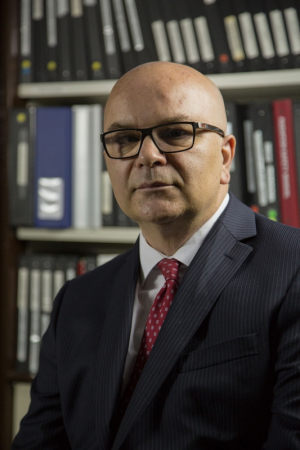The UH Cullen College of Engineering is proud to welcome Roberto Ballarini as the new Chair of the Civil and Environmental Engineering Department.
Ballarini comes to UH from the University of Minnesota, where he served as the James L. Record Professor of Civil Engineering for eight years in addition to heading the Department from 2007 to 2012.
Although Ballarini earned his M.S. and Ph.D. degrees in civil engineering from Northwestern University, he said that his passion is applying his knowledge and skills to many fields and disciplines – even those beyond engineering. “My primary background is in the mechanics of materials and structures, but early on in my career I decided not to work on one specific topic,” Ballarini said. “Instead, I decided to adopt a multidisciplinary approach and to pursue interesting problems in many different fields.”
This cross-disciplinary outlook on the engineering field could help to explain why Ballarini’s research has been published in civil engineering, mechanical engineering, biophysics, microengineering, and even dentistry journals; in fact, his research spans topics covering advanced composites, microeletromechanical systems, natural and synthetic nanostructures, biological structures, aerostructures, applied mathematics and prosthetics.
But despite his many successes as a researcher, Ballarini said his proudest achievements came during his role as a teacher and mentor to engineering students.
“Teaching is what I enjoy the most. It is my number one priority,” Ballarini explained. “What I feel most happy about are the positive contributions I have made to the lives of the students I’ve taught. I very much enjoy receiving postcards at Christmas from undergraduate students who I taught almost 30 years ago. That’s what I’m most proud of – the impact I have had as an engineering educator.”
Ballarini added that his multidisciplinary mindset helps to inform his teaching style and classroom lectures as well. He often illustrates complicated engineering concepts by drawing on examples from industry and research from a variety of different fields.
“For example, a structural engineer can apply their knowledge of the laws of physics and chemistry to model the behavior of biological materials such as collagen, or electronic materials that comprise the guts of computers and cell phones,” he said.
And since engineering students will be required to work in multidisciplinary teams once they enter industry or academia, Ballarini stressed the importance of introducing cross-disciplinary examples and concepts to engineers within their academic curriculum. Moreover, doing so increases the chances of students finding their niche within the many engineering fields by increasing students’ exposure to a wide range of disciplines and career paths.
“Many new engineering students don’t understand the versatility of a civil engineering degree,” Ballarini explained. “Our students graduate and go on to work at NASA, Boeing and the oil industry – they are not just building bridges and roads, designing transportation systems, and helping to clean the environment. I think giving students this kind of mentoring on their possible career paths is so important.”
In addition to adding a multidisciplinary flair to the civil and environmental engineering curriculum at the Cullen College, Ballarini said he also hopes to increase undergraduate and graduate student enrollment within the Department. The Department will also begin aggressively seeking new faculty members, especially those who have expertise in geotechnical engineering and water resources.
Ballarini said he plans to explore the potential benefits of starting a transportation program that will leverage the strengths of the Cullen College, other departments within the University of Houston, local industry and the Texas Department of Transportation.
Ultimately, however these plans play out, Ballarini said the Civil and Environmental Engineering Department at the UH Cullen College of Engineering is destined for great things. This is due in no small part to UH’s location in the city of Houston, the energy capital of the world.
“For a civil engineer, being in Houston is like being a kid in a candy store,” Ballarini said. “There is a huge opportunity to connect with local industries, and Houston is an excellent place to try to solve many of the grand challenges faced by the civil engineering profession, such as transportation, infrastructure, carbon sequestration, clean water and even weather events such as hurricanes. Civil engineers have so much potential impact right here in Houston.”
